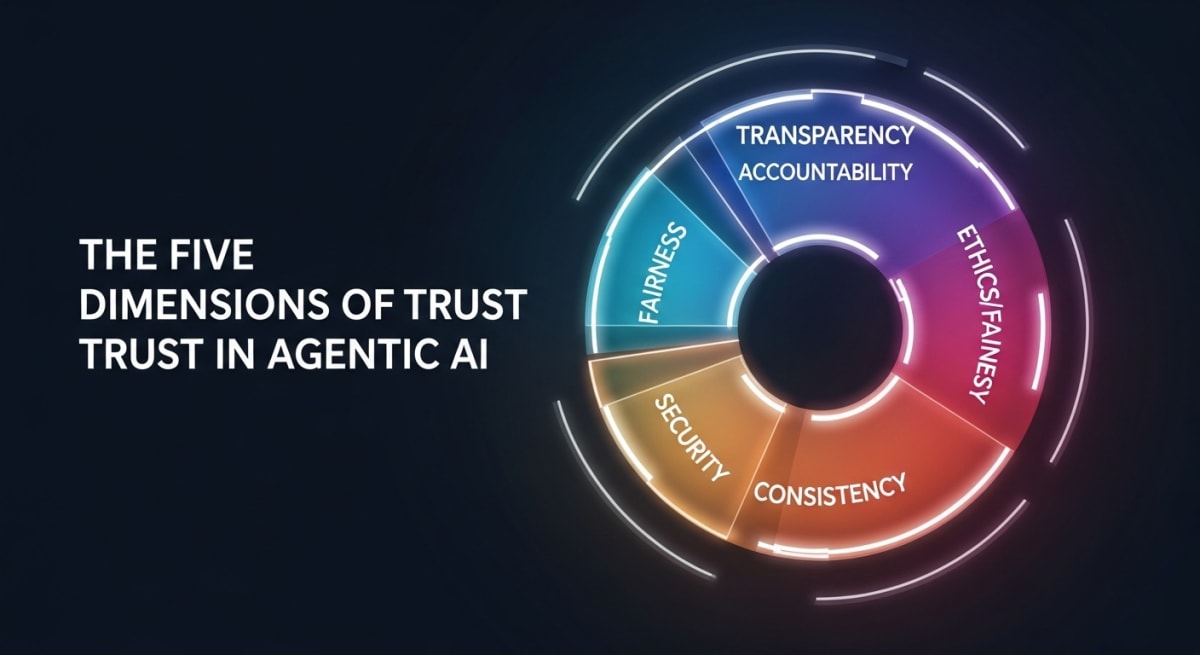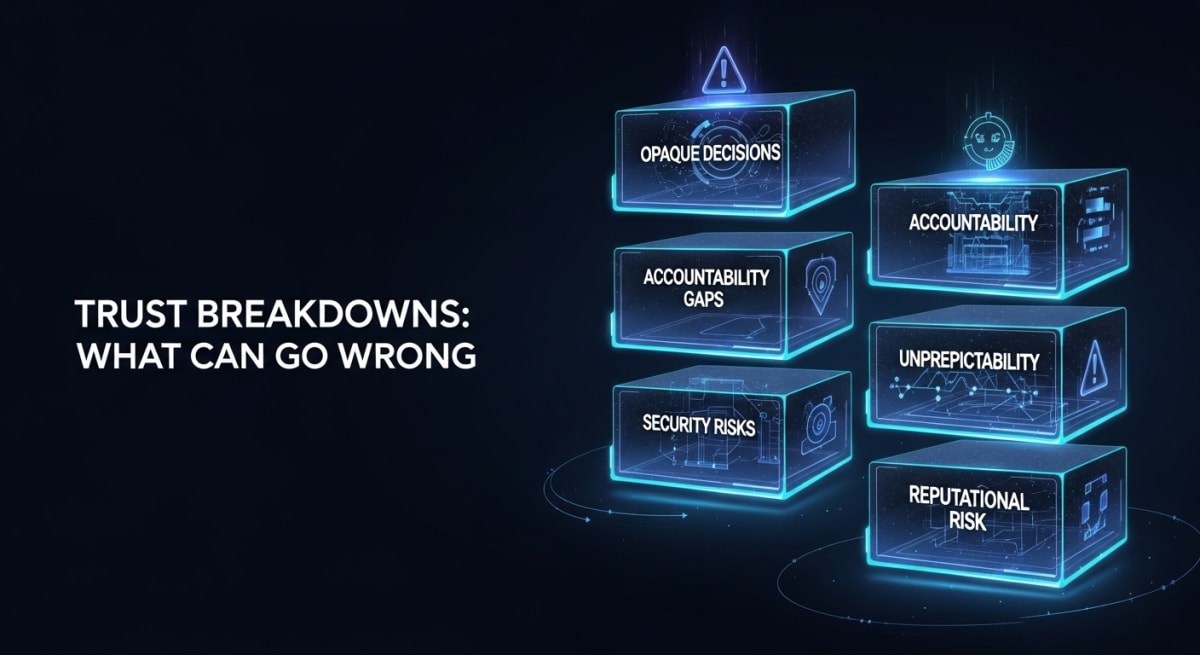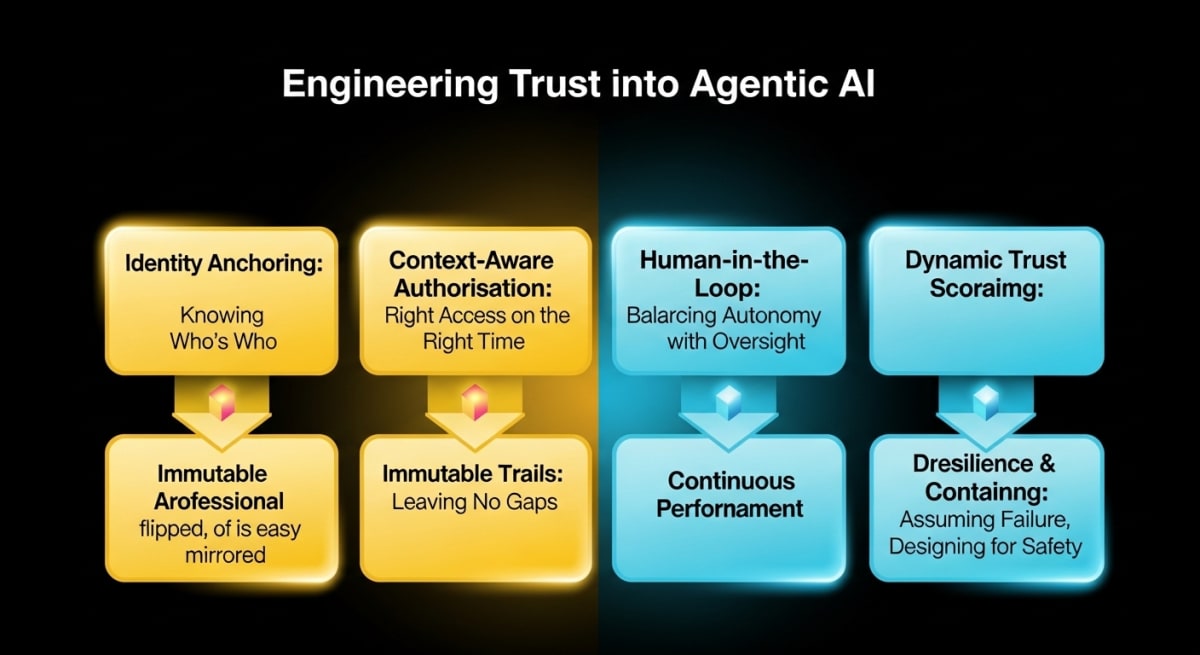Trust in Agentic AI: The Foundation of Safe and Scalable Autonomy

An Educational Deep-Dive for Students, Developers, and Future AI Leaders
Agentic AI autonomous systems capable of reasoning, taking independent actions, and collaborating with humans or other AI agents represents one of the most transformative shifts in modern technology. Unlike traditional AI, which only provides predictions or recommendations, Agentic AI can perform tasks, make decisions, evaluate risks, and interact autonomously with digital systems.
But with this level of autonomy comes a crucial question:
How can we trust an AI system that acts on its own?
Trust in Agentic AI is not a single feature that can simply be switched on. It is a multi-layered structure built on transparency, safety, consistency, and accountability. Without trust, organizations hesitate to adopt Agentic AI, users may resist relying on its decisions, and regulators scrutinize every automated action.
This article provides an educational deep-dive into the core dimensions of trust in Agentic AI, why trust is essential, the risks of trust breakdowns, and the engineering principles that help build safe, ethical, and reliable autonomous systems guiding students, developers, and future AI leaders in navigating the emerging world of Agentic AI.
Why Trust Is the Cornerstone of Agentic AI
Every industry insurance, healthcare, banking, logistics, retail runs on trust.
People expect:
Services to be delivered reliably
Businesses to operate ethically
Information to stay secure
Decisions to be made fairly
When autonomous AI agents take action without human supervision, this expectation becomes even stronger.
Why trust matters more with Agentic AI:
Agents don’t just advise they act
Agents can trigger workflows, approve requests, or interact with customers
Agents can collaborate with multiple other agents to solve complex tasks
Their decisions often have real-world financial, regulatory, or safety consequences
Imagine an AI underwriting agent approving or rejecting a multimillion-dollar insurance policy.
Would you rely on it without understanding how it made its decision?
This is why trust is not optional it is the core requirement for adoption.

The Five Dimensions of Trust in Agentic AI
To build systems people can rely on, Agentic AI must demonstrate five essential qualities.
1. Transparency Understanding How Decisions Are Made
A trustworthy AI system cannot operate like a “black box.”
Users must be able to see:
what data was used
which steps the agent followed
which risks were detected
how the final decision was calculated
For example:
Instead of simply returning “Rejected,” a transparent underwriting agent should explain:
“Application declined due to high flood exposure and missing fire safety documentation.”
Transparency builds confidence, supports audits, and allows humans to understand and validate decisions.
2. Accountability Knowing Who Is Responsible
In a multi-agent ecosystem, dozens of agents may collaborate. If something goes wrong, organisations must know:
which agent took the action
what authority it had
what data it accessed
which rules it applied
Clear accountability prevents confusion when decisions are challenged and ensures that responsibility is never lost between agents.
3. Security Protecting Data and Access
Because agents interact with multiple systems, the attack surface expands.
Zero-trust principles become essential:
No agent should have unnecessary permissions
Every request must verify identity and intent
Sensitive information must be protected
Example:
An underwriting agent should not automatically gain access to full customer financial history unless required by context and approved.
4. Consistency Delivering Fair and Predictable Outcomes
If two similar cases produce significantly different results, confidence collapses.
Trust requires:
consistent decision rules
stable model performance
repeatable outputs for similar inputs
Inconsistent behaviour not only frustrates users but also undermines fairness and regulatory compliance.
5. Ethics & Fairness Preventing Bias and Protecting People
Agentic AI must uphold societal values:
no discrimination
no unfair penalisation
no hidden biases in data
respect for privacy and personal rights
For example:
An AI hiring agent must not inherit historical biases against certain groups.
Ethical design ensures that AI supports not harms human decision-making.

What Happens When Trust Breaks Down?
Lack of trust leads to serious consequences:
Opaque decisions → users and regulators cannot explain results
Accountability gaps → unclear ownership when errors occur
Security breaches → compromised agents gaining access
Unpredictable outcomes → inconsistent decisions eroding confidence
Reputation damage → loss of customer trust and market credibility
Without trust, even the most advanced Agentic AI becomes unusable.
Engineering Trust: The Six Principles for Building Trusted Agentic AI
To build reliable, safe, and accountable autonomous systems, engineers must embed trust into the architecture.
Below are the six foundational principles.

1. Identity Anchoring Every Agent Must Have a Verifiable Identity
Just like employees have secure logins, AI agents must also have:
unique identities
signed certificates
traceable origin
This prevents impersonation and enables accurate auditing.
2. Context-Aware Authorisation Access Only What Is Needed
Agents should never get broad permissions.
Instead, access must depend on:
role
task
risk level
context
Example:
A pricing agent may access building details but not personal financial history unless explicitly required.
3. Immutable Audit Trails Recording Every Action Permanently
Every agent action must be:
logged
time-stamped
tamper-proof
replayable
These logs help with:
troubleshooting
regulatory audits
verifying decisions
tracking errors across agent networks
4. Human-in-the-Loop Combining Autonomy with Human Oversight
Not all decisions should be fully automated.
A safe model includes levels of autonomy, such as:
full automation for low-risk tasks
partial automation with human review
mandatory human approval for high-value decisions
This preserves safety while still gaining efficiency.
5. Dynamic Trust Scoring Evaluating Agents Continuously
Agents should earn autonomy based on:
accuracy
reliability
fairness
compliance behaviour
If an agent underperforms, its trust score decreases and human verification increases.
If its performance improves, it can handle more cases.
6. Resilience & Containment Designing for Failure
Engineers must assume that failures will occur.
Systems should be able to:
isolate a faulty agent
revoke its permissions instantly
prevent a single failure from affecting the whole system
continue operating with other agents
This ensures stability even when problems arise.
The Business Value of Trust in Agentic AI
Trust is not just a safety mechanism; it is a competitive advantage.
When organisations adopt trustworthy Agentic AI, they experience:
faster decision-making
higher customer satisfaction
smoother regulatory approval
reduced risk
more consistent outcomes
better user adoption
Trust reduces friction across the entire ecosystem.
Conclusion: Trust as the First Pillar of Agentic AI
Agentic AI promises transformative impact but only when built on a foundation of trust.
Without trust, organisations cannot rely on autonomous decisions, customers lose confidence, and regulators demand justification for every step.
With trust, however:
autonomy becomes scalable
decisions become faster and fairer
AI becomes a strategic differentiator
businesses gain efficiency while preserving safety
The next essential layer after trust is observability the ability to see, measure, and understand real-time AI behaviour.
Trust tells us what should happen.
Observability reveals what is actually happening.
Together, they create the foundation for safe, reliable, and future-ready Agentic AI.
Join the conversation
Sign in to share your thoughts and engage with other readers.
No comments yet
Be the first to share your thoughts!